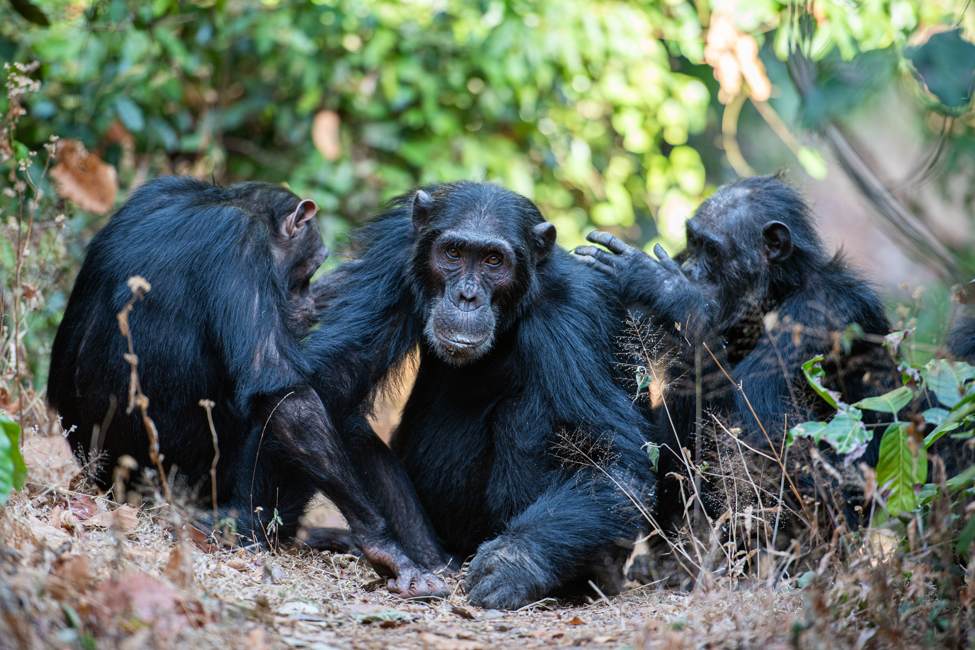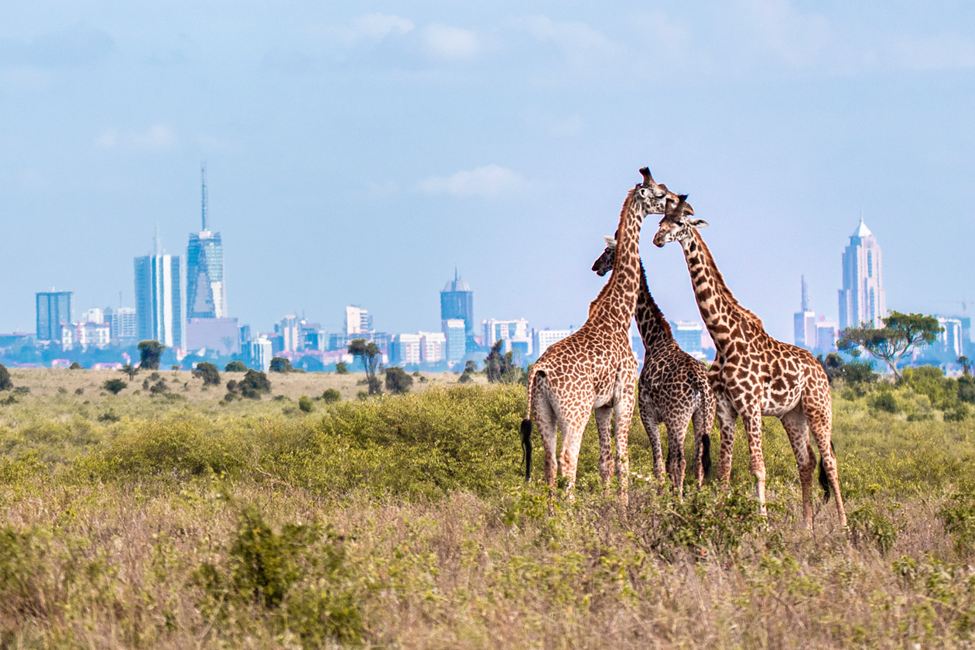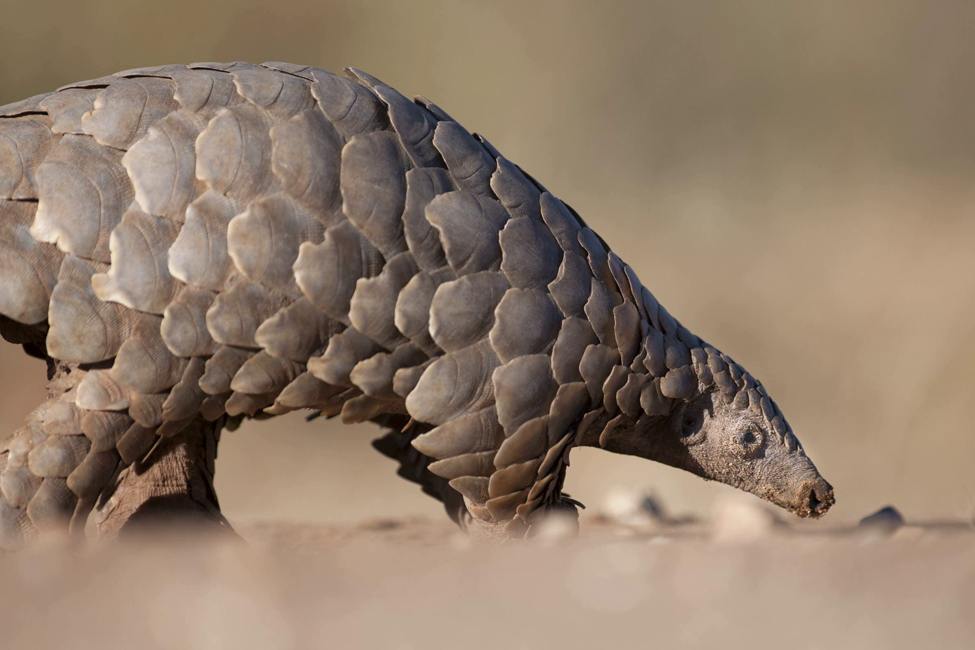The adorable eastern rock elephant shrew lives in southern Africa.
Africa’s Little 5: Small Animals to See on Safari
You may have already heard of Africa’s Big Five game: leopards, elephants, Cape buffalos, rhinos, and lions. With their massive size and strength, these majestic creatures capture the attention of anyone who encounters them.
But many smaller African animals are just as fascinating—you just have to know where to look!
The Little Five is a fun, pun-filled list of tiny African wildlife that make a big impression.
What are Africa’s Little Five safari animals? Read on to find out more about the beautiful buffalo weaver, extraordinary elephant shrew, lovely leopard tortoise, astounding antlion, and resplendent rhinoceros beetle.
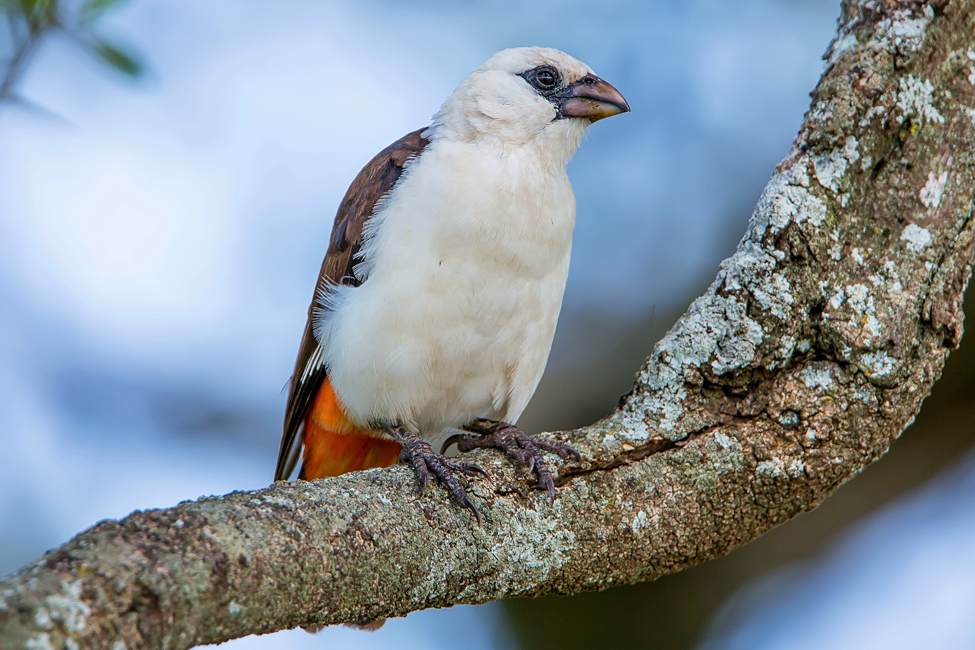
A white-headed buffalo weaver perches on a tree branch.
Buffalo Weaver
Of all the Little Five animals, buffalo weavers are probably the easiest to spot. These birds aren’t shy of people. In fact, they thrive where humans and livestock roam.
Buffalo weavers got their name because they tend to flock around Cape buffalo herds. These social birds nest together in trees or in manmade structures like windmills. They communicate with each other through chirps, tweets, and songs so constantly that you are likely to hear them before you see them.
You can spot two species: the white-headed buffalo weaver (Dinemellia dinemelli, pictured above) and the red-billed buffalo weaver (Bubalornis niger, pictured at the end of the article):
- Red-billed buffalo weavers are found in East Africa and most of southern Africa.
- White-headed buffalo weavers have a more limited range that includes Kenya, Tanzania, and Uganda.
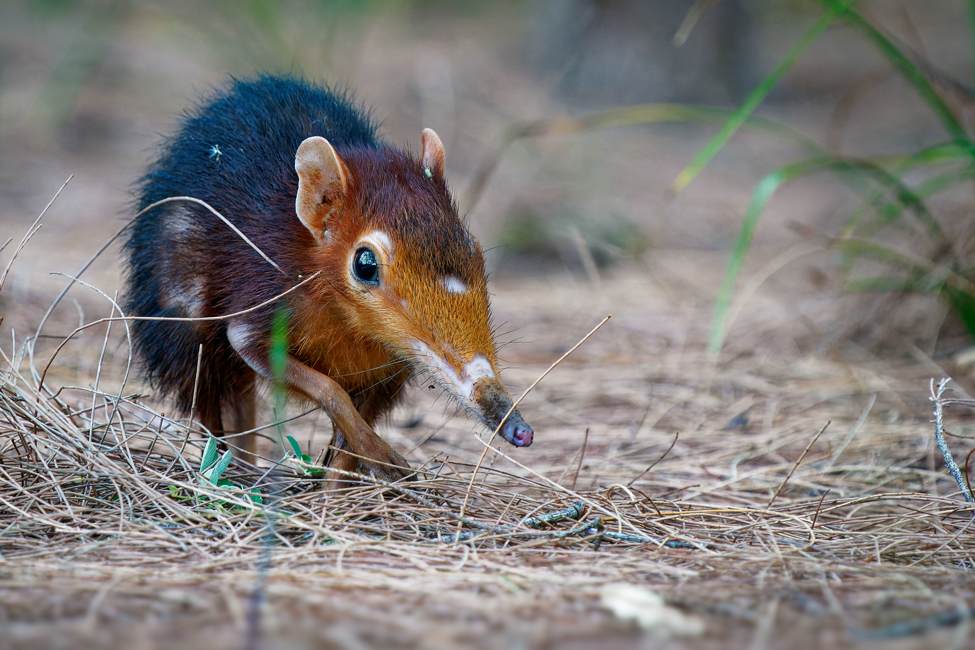
The black and rufous sengi, also known as the Zanj elephant shrew, lives in the forests of Kenya and Tanzania.
Elephant Shrews
Are elephant shrews more closely related to elephants or shrews?
The surprise answer: Genetic studies show a closer relationship to elephants.
Of course, no one knew this back when elephant shrews got their English name. It was just a good way to describe their long noses and small size.
With 20 species found throughout Africa, elephant shrews can be as small as a mouse or as large as a squirrel.
Some elephant shrews are also called “jumping shrews” because they hop like rabbits. “Sengi” is another name for an elephant shrew.
Despite their diminutive size, elephant shrews can be very fast—some species can reach speeds of almost 18 miles an hour!
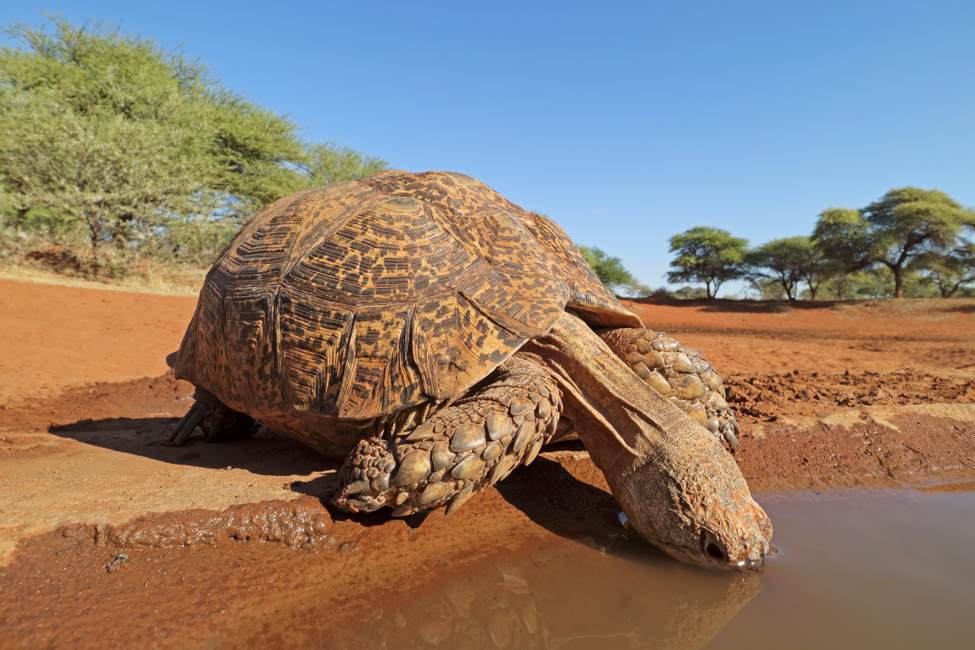
A leopard tortoise drinks from a watering hole in South Africa.
Leopard Tortoise
Weighing up to 40 pounds and living as long as 100 years, the leopard tortoise is the largest of Africa’s Little Five.
It is also the fourth largest tortoise in the world. A typical leopard tortoise can reach about 16 inches in length, but some grow as long as 28 inches!
Leopard tortoises love eating grass and thistles, so the savannas of eastern Africa, Botswana, Zambia, Zimbabwe, South Africa, and Namibia make them feel right at home.
Baby leopard tortoises are vulnerable to predators. But adults don’t have much to worry about. When threatened, a leopard tortoise retracts into its shell until the predator gets bored and wanders off.
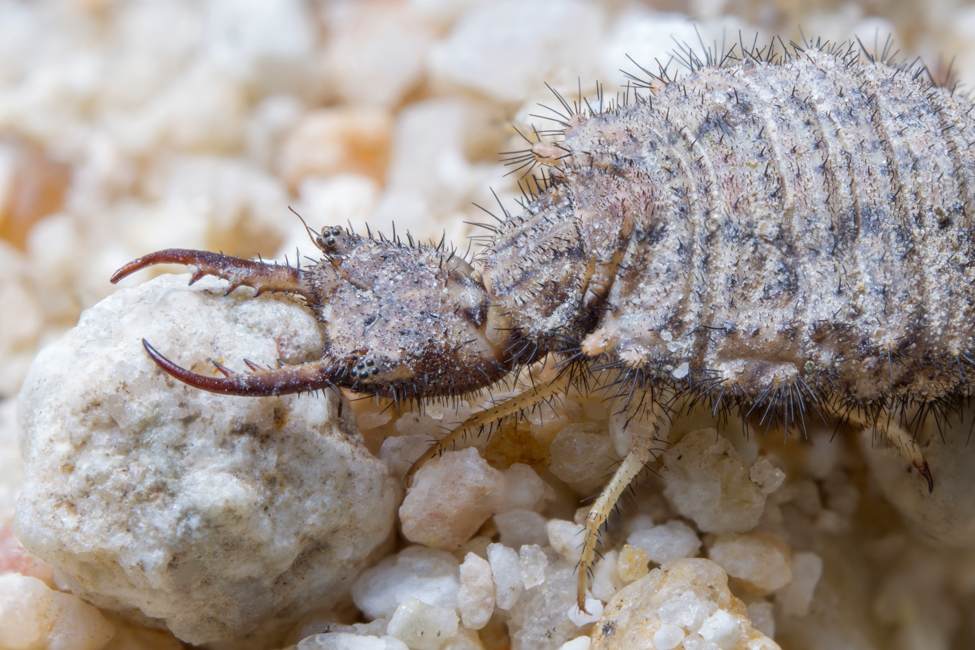
An antlion shows off its enormous jaws.
Antlion
Antlions are top predators in the insect world, digging sand pits that trap ants and other small bugs.
But what’s really amazing about these ferocious hunters is that they’re just babies!
Antlions are the larvae, or young, of a family of insects called myrmeleontids. As adults, they look like damselflies or dragonflies. But when they’re young, they are small and fuzzy, with large heads and large “fangs” in their jaws. Since they don’t have wings, they get their food on the ground.
Antlions are tricky hunters. They dig small pits and then bury themselves in the center, leaving only their jaws sticking out. Insects slide down the sides of these pits and right into an antlion’s mouth!
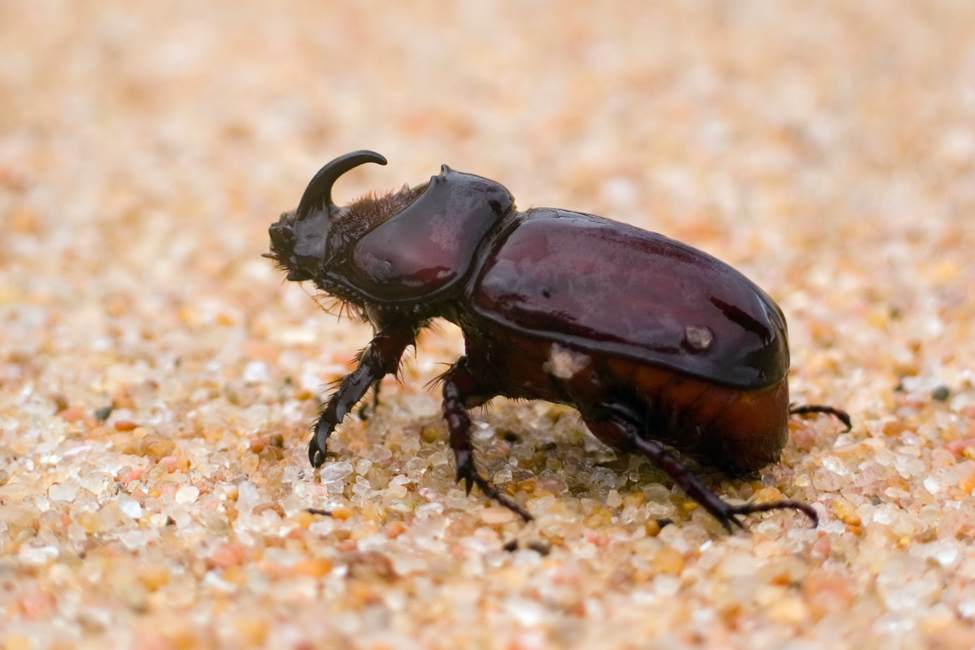
This rhinoceros beetle was found in KwaZulu-Natal, South Africa.
Rhinoceros Beetle
Africa has many species of rhinoceros beetles, so named for the horn-like structures that protrude from their faces. They use the horns to dig for food, and males also use them when fighting each other over mates. Ranging in size from 1 to 2½ inches, rhinoceros beetles are among the world’s largest beetles.
So maybe they belong in the Big 5, too!
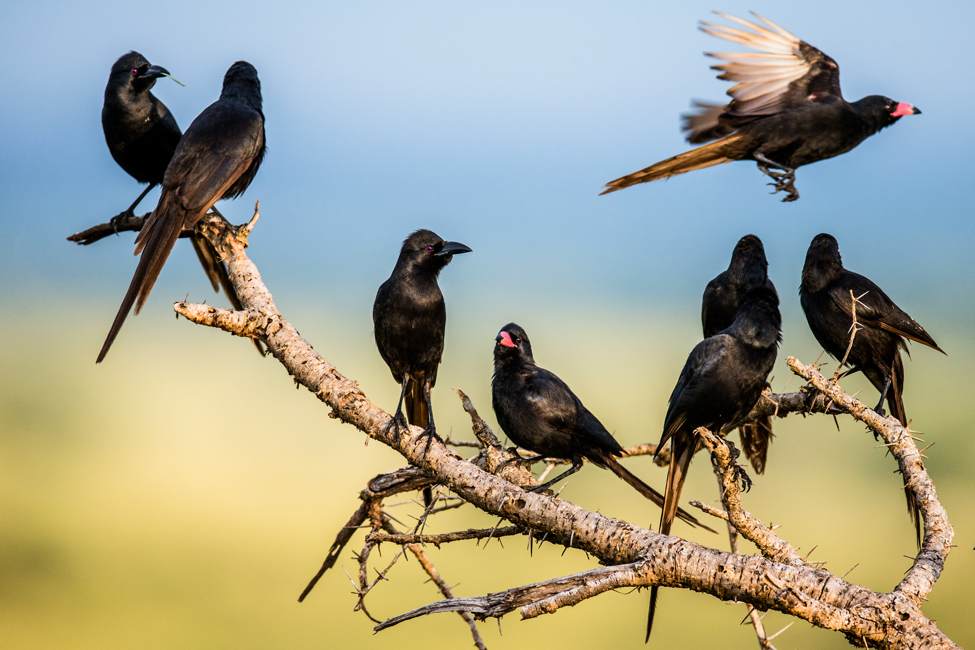
Red-billed buffalo weavers gather in Queen Elizabeth National Park, Uganda.
Seeing the Little 5
Make it a goal to see all of Africa’s Little Five animals on your safari!
Leopard tortoises and buffalo weavers are often seen on game drives while looking for the Big 5 and other large mammals.
But to see the smaller members of the Little Five, you’ll need to get closer to the ground. Hikes and walking safaris are ideal for seeing small creatures. Even if your walk has a different main purpose—like a chimp trek or gorilla trek—you have a good chance of seeing tiny wildlife along your route, especially if you let your guide know it’s a priority.
In addition to the Little Five of Africa, some areas have their own Little Five lists of small wildlife unique to their country or region. For example, Namibia has a list of five little animals unique to the Namib Desert.
What small creatures are on your safari “must-see” list? Contact Ujuzi to plan your Little Five adventure!


